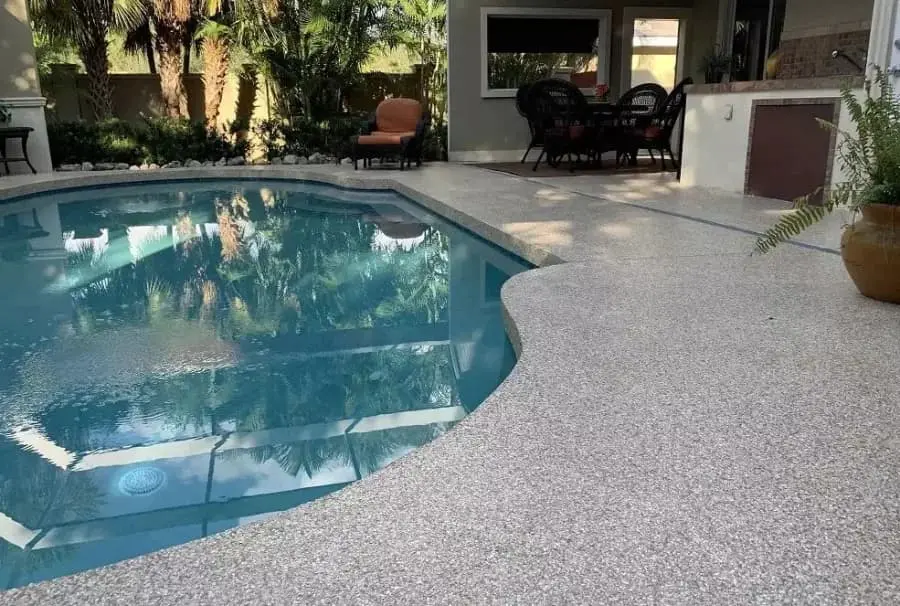Pool deck resurfacing is a crucial aspect of maintaining the aesthetic appeal and safety of your outdoor space. Over time, exposure to the elements and constant use can take a toll on your pool deck, making it look worn-out and potentially hazardous. Resurfacing is a viable solution to breathe new life into your pool area, ensuring it remains inviting, safe, and enjoyable for years to come. However, this process is intricate and requires a thoughtful approach. In this blog, we will delve into common mistakes to avoid during pool deck resurfacing to ensure a successful and long-lasting outcome.
- Ignoring the Preparation Phase:
One of the most critical steps in pool deck resurfacing is proper preparation. Failing to prepare the surface adequately can lead to poor adhesion of the new material, resulting in an uneven and short-lived finish. Ensure that the existing surface is thoroughly cleaned, repaired, and primed before proceeding with the resurfacing. This includes addressing any cracks, chips, or other damages that might compromise the integrity of the final result.
- Choosing the Wrong Resurfacing Material:
The market is flooded with a variety of resurfacing materials, each with its own unique properties, advantages, and disadvantages. Selecting the wrong material can affect not only the appearance of your pool deck but also its durability and safety. Consult with a professional to understand the best options available for your specific needs, climate, and budget. Ensure that the chosen material provides a non-slip surface, is resistant to UV rays, and can withstand the rigors of constant exposure to water and chemicals.
- Skimping on Professional Help:
While it might be tempting to cut costs by attempting a DIY resurfacing project, pool deck resurfacing is a complex task that requires specialized skills, tools, and knowledge. Hiring a professional ensures that the job is done correctly, efficiently, and safely, saving you time and potential headaches in the long run. Professionals have the expertise to assess the condition of your pool deck, recommend the best course of action, and execute the resurfacing with precision.
- Overlooking Weather Conditions:
Weather plays a significant role in the success of a pool deck resurfacing project. Resurfacing materials require specific conditions to cure and adhere properly. Undertaking the project during adverse weather conditions, such as extreme temperatures, humidity, or precipitation, can lead to a compromised finish. Plan the resurfacing during a time of the year when the weather is stable and conducive to the materials being used.
- Neglecting Post-Resurfacing Care:
Once the resurfacing is complete, it is crucial to allow ample time for the material to cure and set properly. Rushing this process can result in a weak and unstable surface. Follow the manufacturer’s guidelines for curing times, and avoid walking or placing furniture on the pool deck until it is fully cured. Additionally, implement regular maintenance practices, such as cleaning and sealing, to protect the surface and extend its lifespan.
Conclusion:
Pool deck resurfacing in Tampa is a valuable investment in the longevity and safety of your outdoor space. Avoiding common mistakes during the process ensures a successful outcome that enhances the beauty and functionality of your pool area. By prioritizing proper preparation, choosing the right materials, seeking professional assistance, considering weather conditions, and adhering to post-resurfacing care guidelines, you can enjoy a revitalized pool deck that stands the test of time. Remember, a thoughtful and informed approach is key to achieving a flawless and durable resurfaced pool deck.


